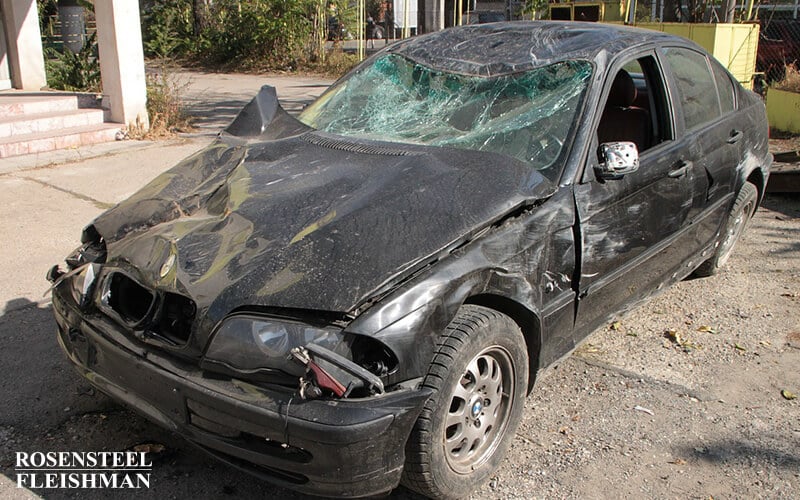Getting into a car accident can throw everything off balance. One moment you're running errands or heading home from work, and the next you're dealing with a damaged vehicle, lingering soreness, and a pile of unanswered questions. It's easy to feel overwhelmed, especially when you're unsure what to do next or who you can turn […]

Contributory Negligence in Car Accidents in North Carolina
If you are in a car accident and want to receive damages for your injuries from the other party, you will have to show that the other party was negligent. One defense that the defendant may raise is that you were also negligent. In most states, your own negligence will not keep you from receiving damages, but it might reduce the damages you receive. North Carolina, however, is one of a handful of states that employs a stricter standard called contributory negligence. Generally, if you are found to be contributorily negligent, you are barred from receiving any damages.
According to North Carolina law, “A plaintiff is contributorily negligent when he fails to exercise such care as an ordinarily prudent person would exercise under the circumstances in order to avoid injury.” The doctrine of contributory negligence requires a victim to use reasonable care as a driver, a passenger or a pedestrian. In order for contributory negligence to keep a victim from receiving damages, the victim’s negligent behavior must be a proximate cause of the accident and contribute to the plaintiff’s injury. Some examples of contributory negligence are when a victim driver is speeding, when a victim passenger knowingly rides with a drink driver, or, in some cases, when a victim pedestrian unexpectedly darts across a road.
There are a few exceptions to the doctrine of contributory negligence. First, although failure to comply with a law is generally per se negligence, North Carolina statute provides that failure to wear a seatbelt is not contributory negligence because under G.S 20-135.2A.(d):
Evidence of failure to wear a seat belt shall not be admissible in any criminal or civil trial, action, or proceeding except in an action based on a violation of this section or as justification for the stop of a vehicle or detention of a vehicle operator and passengers.
Another exception is when the defendant’s conduct is “willful or wanton.” If the defendant’s conduct is willful or wanton, then a plaintiff’s contributory negligence does not bar a plaintiff from receiving damages. According to North Carolina jury instructions,
On this issue the burden of proof is on the plaintiff. This means the plaintiff must prove, by the greater weight of the evidence, that the defendant engaged in willful or wanton conduct and that such conduct was a proximate cause of the plaintiff's [injury] [damage]…. An act is willful if the defendant intentionally fails to carry out some duty imposed by law or contract which is necessary to protect the safety of the person or property to which it is owed. An act is wanton if the defendant acts in conscious and intentional disregard of and indifference to the rights and safety of others.
The defendant’s willful or wanton conduct must also be a proximate cause of the accident and contribute to the plaintiff’s injuries. For examples of what constitutes willful or wanton conduct, North Carolina courts have determined in motor vehicle cases that:
Our case law as developed to this point reflects that the gross negligence issue has been confined to circumstances where at least one of three rather dynamic factors is present: (1) defendant is intoxicated, (2) defendant is driving at excessive speeds, or (3) defendant is engaged in a racing.
Another exception is the contributory negligence of children. North Carolina courts have found that “an infant under 7 years of age is conclusively presumed to be incapable of contributory negligence.” Children between the ages of 7 and 14 are also presumed incapable of contributory negligence, but unlike children under the age of 7, this presumption is not conclusive. According to North Carolina jury instructions:
A child who is between seven and fourteen years of age is not required to exercise the same degree of care for the safety of others that is required of an adult. The law imposes a duty upon a child to exercise only that degree of care for the safety of others that a reasonably careful child of the same age, discretion, knowledge, experience and capacity ordinarily would exercise under the same or similar circumstances. The degree of care required varies with the child's age, discretion, knowledge, experience and capacity. A child's failure to exercise the required degree of care would be negligence, and if the minor plaintiff's negligence joins with the negligence of the defendant in proximately causing the minor plaintiff's own [injury] [damage], it is called contributory negligence, and the minor plaintiff cannot recover.
The last clear chance exception is another exception to the rule of contributory negligence. In order for a plaintiff to collect damages under the last clear chance exception, the plaintiff must prove:
(1) that the plaintiff negligently placed himself in a position of helpless peril; (2) that the defendant knew or, by the exercise of reasonable care, should have discovered the plaintiff's perilous position and his incapacity to escape from it; (3) that the defendant had the time and ability to avoid the injury by the exercise of reasonable care; (4) that the defendant negligently failed to use available time and means to avoid injury to the plaintiff and (5) as a result, the plaintiff was injured.
The application of the last clear chance exception tends to be fairly fact specific. One common example of a last clear chance exception is where the plaintiff is waiting to pull out of a parking lot into a street but he cannot see oncoming traffic so he creeps out into the street, placing the corner of his car is in the travel lane. The defendant is driving in the partially blocked travel lane and hits the plaintiff’s car. The plaintiff is contributorily negligent since his car was in the defendant’s travel lane and the defendant had the right of way. However, in many cases, the defendant has plenty of time and ability to avoid the accident by stopping or slowing or by going around the plaintiff’s car. The defendant had the “last clear chance” to avoid the accident.
In North Carolina, the simplest way to avoid the defense of contributory negligence is to follow traffic laws and drive safely. However, with some careful analysis of all of the exceptions to the doctrine of contributory negligence, even an imperfect plaintiff may not be barred from recovering damages.
Additional Car Accident Articles
Neck injuries after a car accident can be confusing, frustrating, and even scary—especially when the pain doesn't show up right away. For many people, the moments after a crash are filled with adrenaline, and it’s easy to overlook subtle signs of injury. But what happens when the pain starts hours or even days later? It's […]
Getting hit by a car as a pedestrian is one of those moments that flips life upside down. You may have been walking to work, crossing a parking lot, or just heading home when it happened—and in a flash, everything changed. Dealing with physical pain, time away from your job, and unanswered questions about what […]
It’s hard to describe the exact feeling after a car accident. One minute you’re driving along, and the next, your world is spinning—literally and emotionally. For many people, what comes after the crash is even more overwhelming. You're left dealing with pain, confusion, questions about fault, and pressure from insurance companies. It’s no surprise that […]
